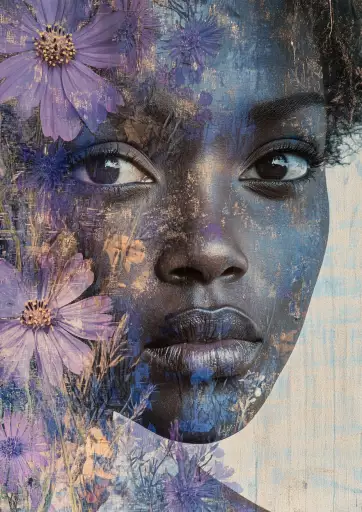Explore the Best AI Image Gallery

Beyond the Brush: AIs Transformative Impact on Graphic Design
The realm of graphic design is undergoing a seismic shift, driven by the rapid advancements in artificial intelligence (AI). This technology, once confined to the realm of science fiction, is now becoming an integral part of the creative process, empowering designers with new tools and capabilities. From generating stunning visuals to streamlining workflows, AI is poised to revolutionize the way we approach design, blurring the lines between human creativity and machine ingenuity.
Unveiling the Potential: How AI Enhances Graphic Design
AIs impact on graphic design extends across a wide spectrum of applications:
- Logo and Branding Creation: AI-powered platforms can analyze trends, target audiences, and generate unique logo concepts based on specific requirements.
- Image Editing and Manipulation: AI algorithms can automate tedious editing tasks such as removing backgrounds, adjusting colors, and enhancing image quality with remarkable precision.
- Typography and Layout Design: AI can assist in selecting appropriate fonts, arranging text elements, and creating visually appealing layouts that adhere to design principles.
- Content Creation for Marketing Materials: AI-powered writing tools can generate engaging copy for websites, social media posts, and marketing campaigns, freeing up designers time for more creative pursuits.
The Human Element: Fostering Collaboration Between Designer and AI
While AI offers powerful capabilities, its essential to recognize that its a tool to augment human creativity, not replace it. The most impactful designs often arise from a collaborative process where designers leverage AIs strengths while injecting their own vision, intuition, and artistic flair.
AI can handle repetitive tasks, analyze data, and generate numerous options, allowing designers to focus on higher-level conceptualization, strategic decision-making, and the refinement of creative concepts. This partnership fosters a symbiotic relationship where both human and artificial intelligence contribute to the creation of exceptional designs.
Navigating the Ethical Landscape: Considerations for Responsible AI in Design
As with any emerging technology, the integration of AI in graphic design raises important ethical considerations that need careful attention:
- Bias and Fairness: AI algorithms are trained on vast datasets, which can inadvertently perpetuate existing societal biases. Its crucial to ensure that AI-generated designs are inclusive and equitable, avoiding the reinforcement of harmful stereotypes.
- Transparency and Explainability: The decision-making processes of complex AI models can be opaque. Strive for transparency in how AI is used in design, allowing users to understand the rationale behind generated outputs and fostering trust.
- Intellectual Property Rights: Questions arise regarding ownership and copyright when AI creates original content. Establishing clear guidelines and legal frameworks is essential to protect the rights of both designers and AI developers.
- Data Privacy and Security: The use of AI in design often involves the processing of user data. Implementing robust security measures and adhering to privacy regulations is paramount to safeguarding sensitive information.
The Future of Design: A Landscape Shaped by AI
The convergence of AI and graphic design is just beginning. As AI technologies continue to evolve, we can expect even more transformative applications:
- Personalized Design Experiences: AI will enable the creation of highly customized designs tailored to individual preferences and needs.
- Real-Time Collaborative Design: AI-powered tools will facilitate seamless collaboration between designers across geographical locations, fostering innovation and accelerating project workflows.
- Interactive and Immersive Designs: AI will play a key role in developing interactive installations, augmented reality experiences, and other innovative formats that blur the lines between the physical and digital worlds.
AI is not merely automating tasks; its empowering designers to push creative boundaries, explore new frontiers, and shape a future where technology and artistry converge seamlessly. The key lies in embracing this transformative potential while navigating ethical considerations responsibly, ensuring that AI serves as a catalyst for human creativity and innovation.




](https://images.ai-img.art/thumbnails/150/f9584153b4cddd8c9fab611dc10247549b275c59bc173251e37d0935874f9deb.webp)



















](https://images.ai-img.art/thumbnails/150/008b5d5d49667cc2e93a5f8a8adfaa545963da99c39ff0901f5296294636400d.webp)

](https://images.ai-img.art/thumbnails/150/f67d9af3398150f2ab1bcf250717fea134275e2ca896252b54a4d9bb3719f9ac.webp)

](https://images.ai-img.art/thumbnails/150/4289d1230b86a96c4d556636c3167bed0ef38f850826549517e4e45db4d87bf7.webp)







](https://images.ai-img.art/thumbnails/150/bddf3ae4a232290858389b933c866ad3be429ef2e25c23a9f4d7713ed6e44d0b.webp)


](https://images.ai-img.art/thumbnails/150/c2c9c48b38fae37f0a457b80b084ed01ba803810fc8f488c8f610c03abc74049.webp)

